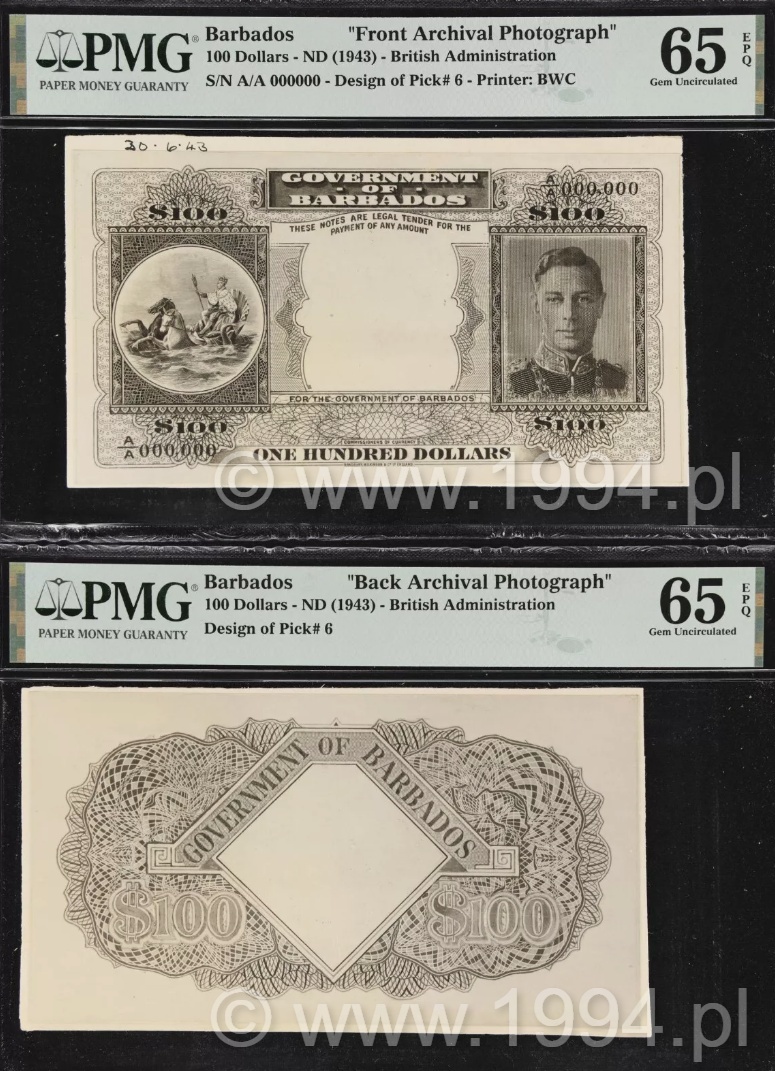Description and research notes
Pair of archival photographs showing both the front and back of an unissued $100 design dated 1943. Produced within British colonial banking workflows, these monochrome prints documented layout, portraits, and border work before (or instead of) any production run. The images preserve the wartime high denomination that never reached circulation, with King George VI portraiture and formal colonial ornament.
During the Second World War, high-denomination proposals across the British West Indies were often deferred or cancelled due to supply constraints, security priorities, and shifting currency needs. Photographic proofs like this served as internal reference material for treasury officials and printers: a durable record of approved design elements, positioning, and text that could be filed, reviewed, or revised without committing to plates.
As a photographic proof, this piece is not legal tender and bears no serials or signatures; its value lies in evidencing a design stage that otherwise disappears when issues are postponed. Surviving examples typically originate from later archival dispersals, making them scarce primary sources for Caribbean numismatic research.
Graded PMG 65 Gem Uncirculated, the pair combines WWII context with British West Indies banknote studies—useful for tracing portrait conventions under George VI, colonial-era typography, and the administrative pathways that shaped (and sometimes halted) high-denomination paper in the region.
